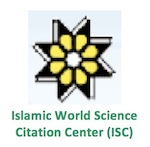


Google Scholar citation report
Citations : 5373
ASEAN Journal of Psychiatry received 5373 citations as per google scholar report
ASEAN Journal of Psychiatry peer review process verified at publons
| Journal Name | ASEAN Journal of Psychiatry (MyCite Report) | ||||
|---|---|---|---|---|---|
| Total Publications | 456 | ||||
| Total Citations | 5688 | ||||
| Total Non-self Citations | 12 | ||||
| Yearly Impact Factor | 0.93 | ||||
| 5-Year Impact Factor | 1.44 | ||||
| Immediacy Index | 0.1 | ||||
| Cited Half-life | 2.7 | ||||
| H-index | 30 | ||||
| Quartile |
|
- Anxiety Disorders
- Behavioural Science
- Biological Psychiatry
- Child and Adolescent Psychiatry
- Community Psychiatry
- Dementia
- Community Psychiatry
- Suicidal Behavior
- Social Psychiatry
- Psychiatry
- Psychiatry Diseases
- Psycho Trauma
- Posttraumatic Stress
- Psychiatric Symptoms
- Psychiatric Treatment
- Neurocognative Disorders (NCDs)
- Depression
- Mental Illness
- Neurological disorder
- Neurology
- Alzheimer's disease
- Parkinson's disease
Abstract
Evaluation Of The Quality Of Life Levels Of Undergraduate And Associate Degree Students Studying In Health Departments
Author(s): Colak T, Mehtap Erdogan*, Acar D and Rahova GQuality of life is at the forefront of the goals that all societies aim to achieve today. This is the main reason why measuring quality of life is a routine procedure in many studies. This study was carried out by undergraduate and associate degree students of health sciences; the aim of this study was to evaluate and compare the quality of life. The research was carried out on a total of 200 undergraduate and associate degree students studying in the health sciences departments of the same university in a one-year period. In order to obtain the demographic information of the students; the personal data collection form created by the researchers and the World Health Organization Quality of Life Scale-Short Form (WHOQOL-Bref) were applied by one to one interview technique.
The voluntariness of the participants was taken as a basis in filling out the questionnaires. SPSS-22 program was used to evaluate the data in our study. By making descriptive statistics, two independent groups were compared between the groups. The mean age of the associate degree students participating in our study was 20.6 ± 1.26, and the undergraduate students were 20.8 ± 3.07. When the last question, the 27th environmental question, is included in the WHOQOL-Bref scale, which consists of four sub-parameters, the name of the scale is named WHOQOL-Bref-TR. In our study, which we evaluated with WHOQOL-Bref-TR, the scores of undergraduate students in the "psychological field" sub-category were found to be significantly higher (p>0.05) than associate degree students in comparisons made based on education level. In the comparison made according to genders, the difference in general health, psychological, and environmental dimensions was not significant (p>0.05). In conclusion; in all comparisons, the level of quality of life and problem solving abilities do not differ depending on gender. As the education level increases; the psychological state, which has an effect on the quality of life, increases positively. With the data obtained, suggestions were made to curriculum arrangements and university administrations in order to increase the quality of life of young adults.


























